Spelling Skills Phonics Worksheets for Ages 4-6
8 filtered results
-
From - To
Discover our "Spelling Skills Phonics Worksheets" designed specifically for children ages 4-6! These engaging, printable worksheets make learning to spell fun and interactive, laying a solid foundation for early literacy. Each worksheet focuses on phonics, helping young learners connect sounds with letters and build essential spelling skills. With a variety of activities including letter matching, fill-in-the-blank exercises, and word recognition games, your child will enhance their confidence in reading and writing. Perfect for at-home practice or complementing classroom learning, these worksheets are a valuable tool for fostering your child's love for language. Start their spelling journey today!
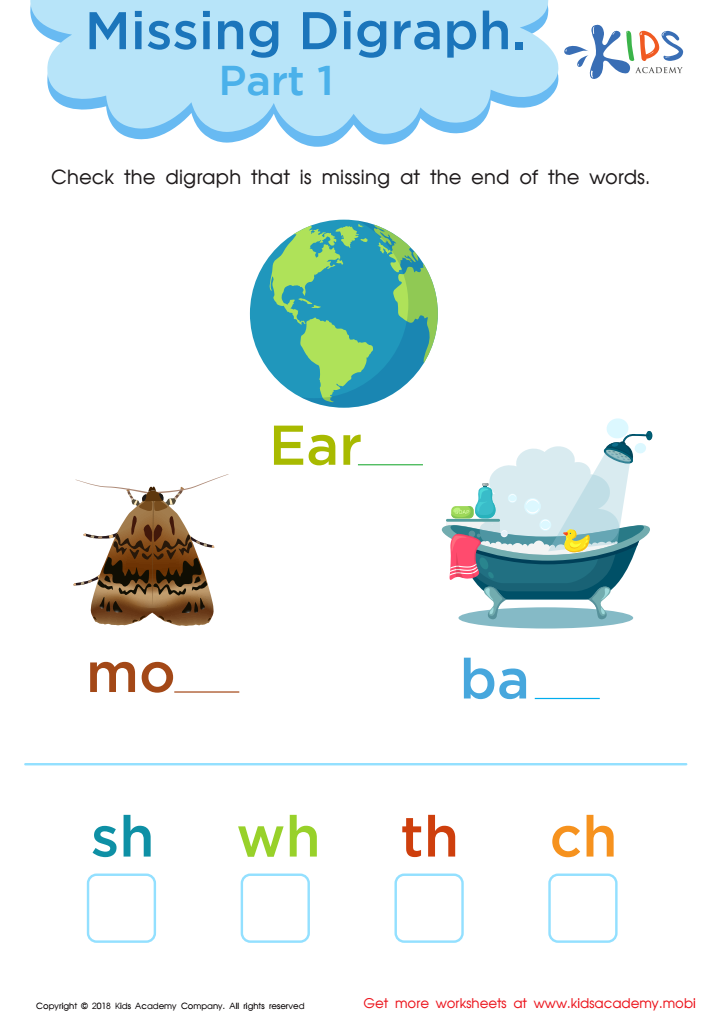

Missing Digraph: Part 1 Worksheet
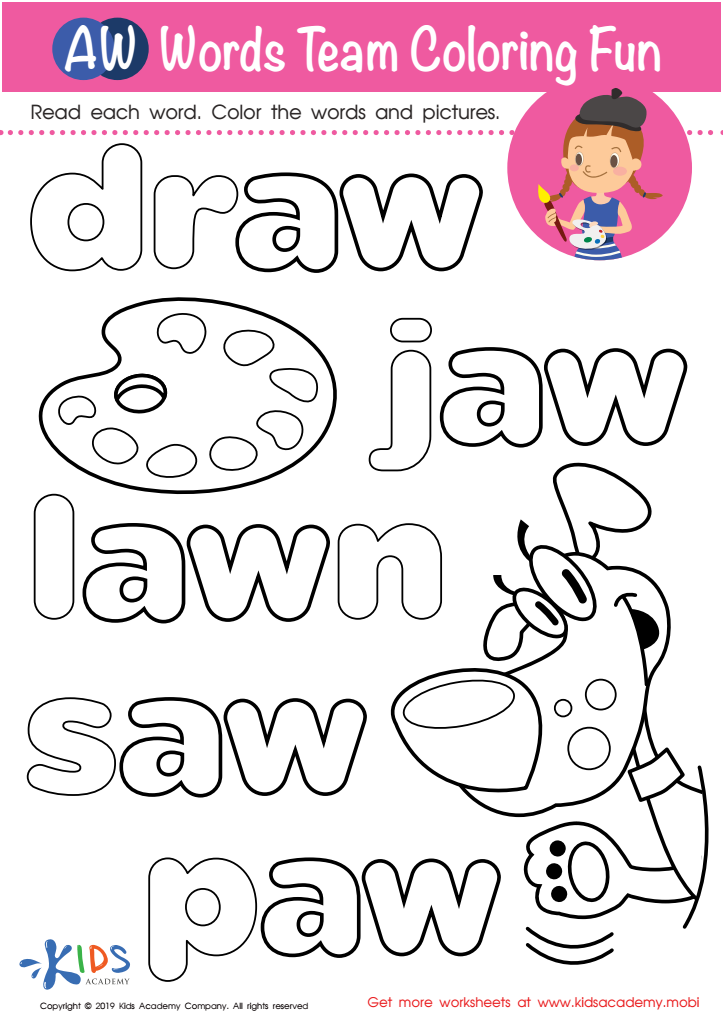

AW Words Team Coloring Fun Worksheet


short vowels Worksheet
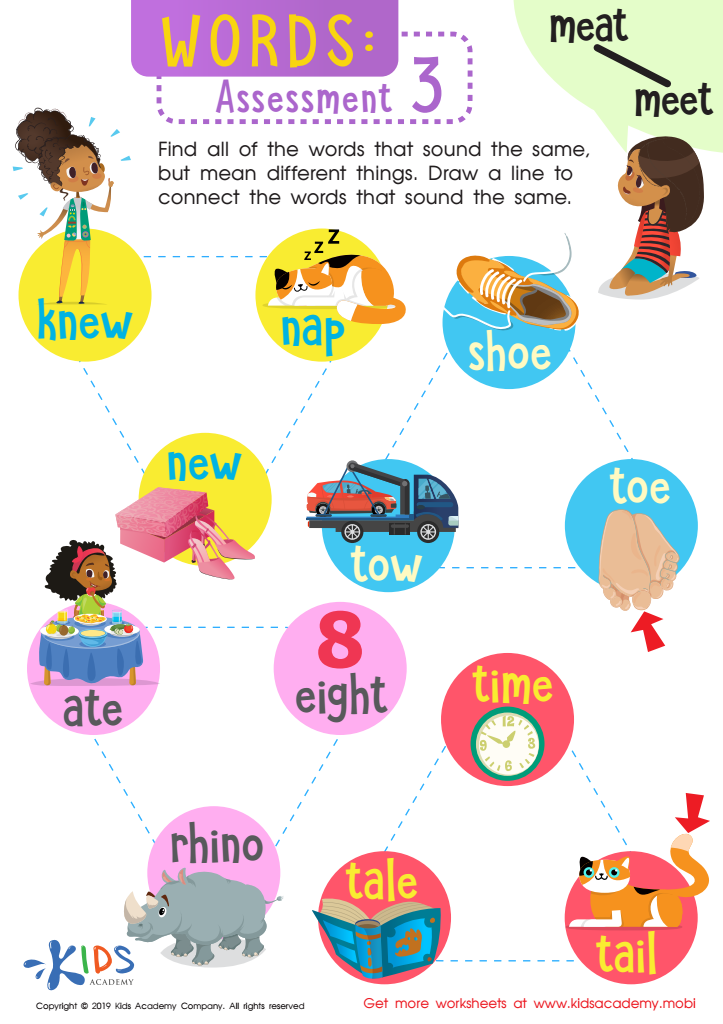

Words: Asessment 3 Worksheet
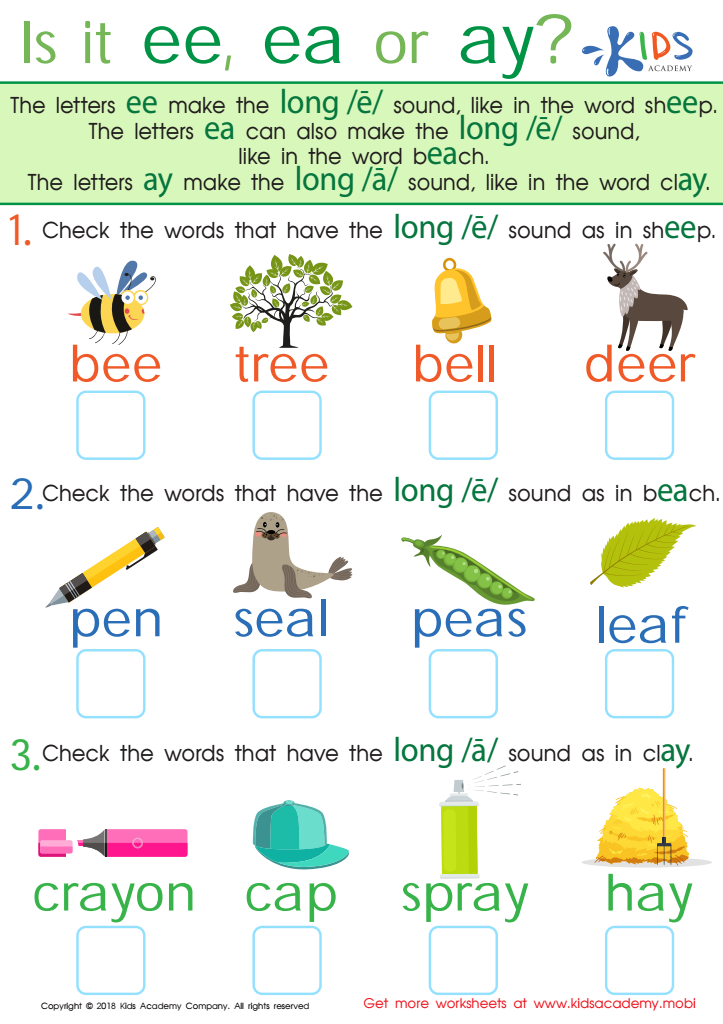

Is It EE, EA, or AY? Worksheet


Finish the Rime Worksheet
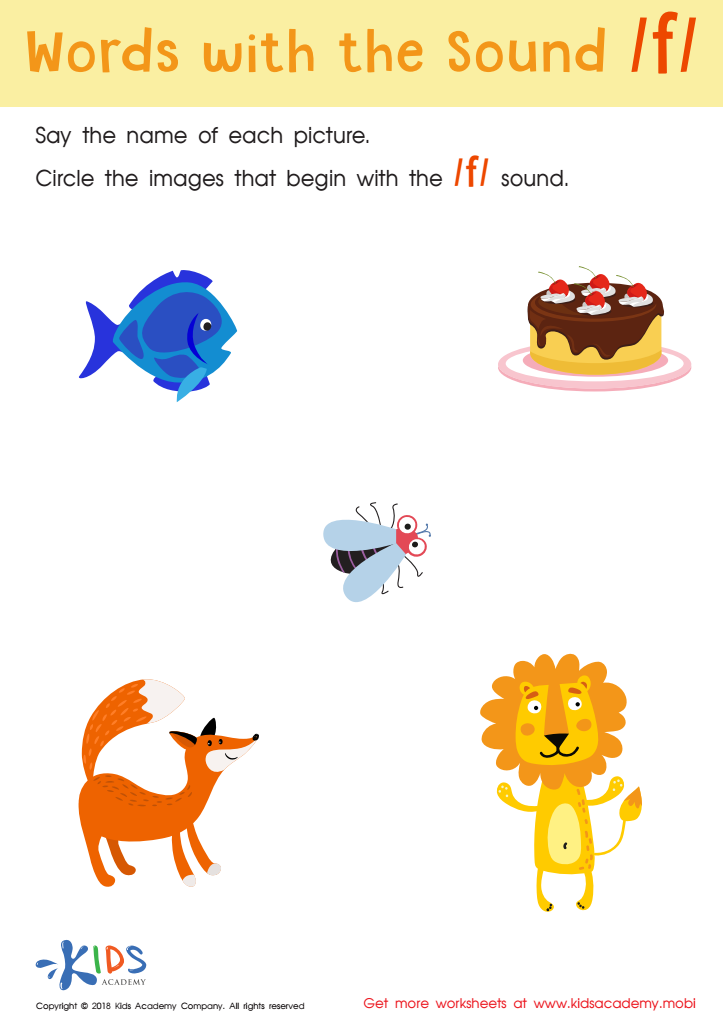

Words with sound f Reading Worksheet
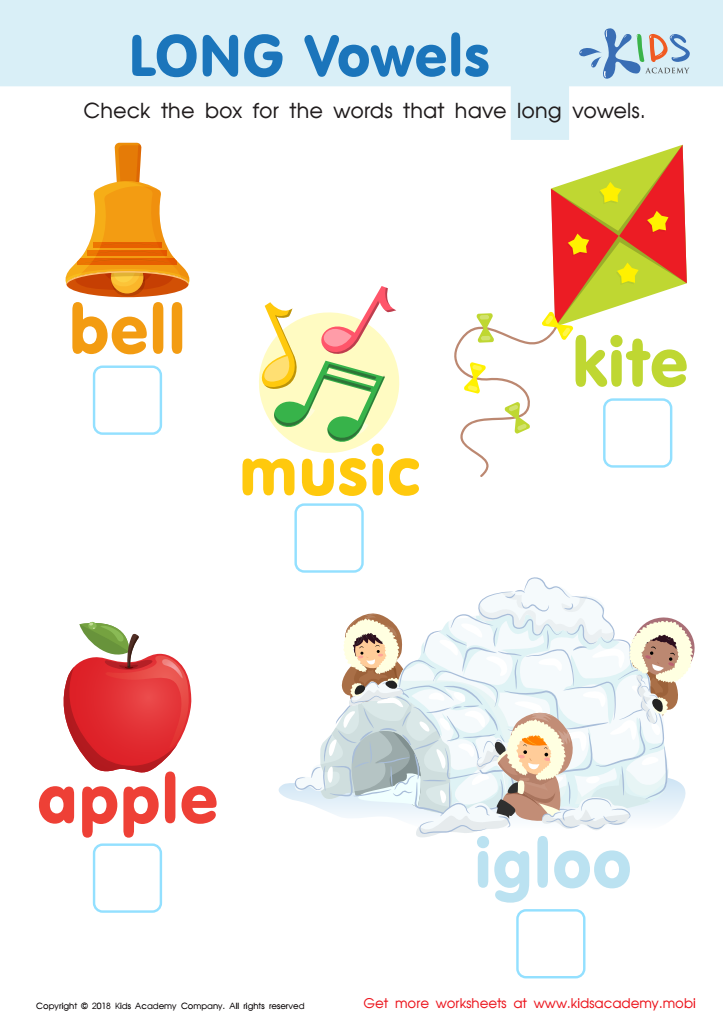

long vowels Worksheet
Spelling skills and phonics form the foundational building blocks of literacy for young children aged 4-6. At this crucial developmental stage, children begin to decode words and understand the relationships between sounds and letters, which are essential for reading and writing. Parents and teachers should care about these skills as they directly impact a child's future academic success and self-confidence.
Effective phonics instruction helps children recognize letter sounds and patterns, enabling them to sound out words independently. Mastering these skills not only enhances reading fluency but also improves comprehension as children learn to connect meanings with words. Furthermore, a strong foundation in spelling promotes better writing abilities; children can communicate their thoughts more clearly when they can spell words correctly.
By engaging in phonics and spelling activities, parents and teachers create a rich linguistic environment that fosters enthusiasm for learning. Activities such as rhyming games, interactive reading, and spelling-based crafts develop a child's critical thinking and analytical abilities, preparing them for more complex literacy tasks in the future. Investing time and effort in teaching these skills can help cultivate a lifelong love for reading and learning, ultimately setting children on a path to academic achievement and communication success.
 Assign to My Students
Assign to My Students



















